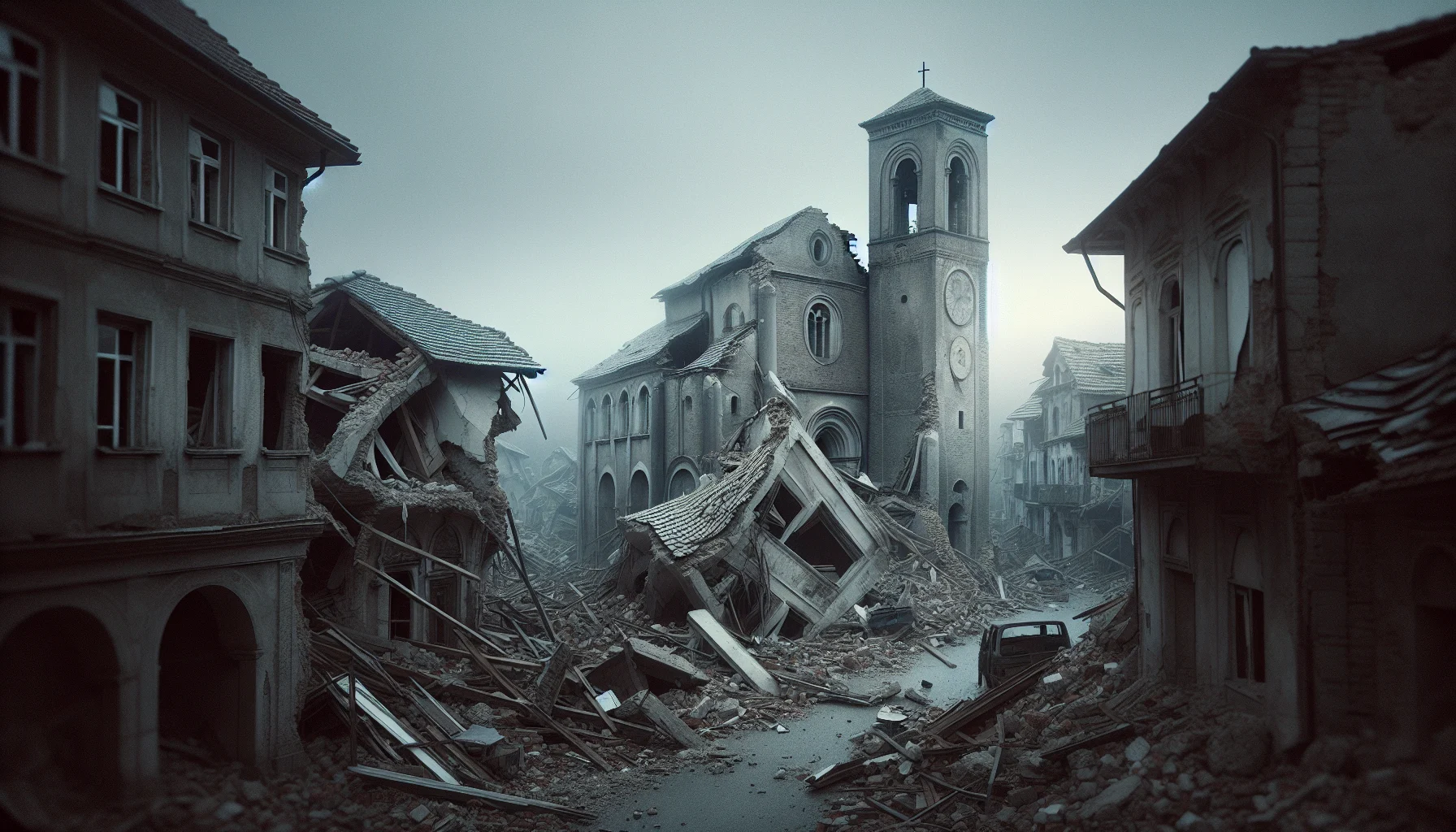
The 1976 Friuli Earthquake
by: The Calamity Calendar Team
May 6, 1976
A Fateful Night in Friuli
On the evening of May 6, 1976, the peaceful calm of the Friuli region nestled in the northeastern corner of Italy was suddenly and violently broken. Without warning, the ground beneath the region's idyllic villages began to convulse. At precisely 9:00 PM, a 6.5-magnitude earthquake erupted, its epicenter near the small town of Gemona del Friuli. This moment marked the onset of one of Italy's most harrowing natural disasters, an event that would forever alter the landscape and lives of those who called this region home.
A Land Marked by Tension
The Friuli region is a tapestry of history and nature woven at the foot of the Alps. Known for its traditional stone buildings and picturesque vistas, there had always been an underlying awareness of the seismic tremors that occasionally rippled through the region. Friuli sits at the juncture of the Eurasian and African tectonic plates, a location known to geologists for its volatile undercurrents. Yet, such scientific warnings were mostly cloaked in the calm of everyday life — until the ground rose with unprecedented fury.
The Night the Earth Shook
As the clock approached 9:00 PM, residents settled into their evening routines. Some were dining, children were playing, while others enjoyed the twilight in their gardens. What happened next was a nightmare materialized. The tremor ruptured the earth with a ferocity that shattered the tranquil May evening. Within seconds, centuries-old stone structures crumbled; debris choked narrow village streets, and the very fabric of communities was torn apart. Power lines buckled, pitching towns into darkness, and a chilling echo of alarms and shouts for help swept across 77 communes.
Gemona, Venzone, and Tolmezzo bore the brunt of nature's fury, their cultural heritage — embodied in ancient towers and churches — reduced to rubble. In the panic that followed, families clung to one another amid the chaos and confusion, praying for safety from nature's wrath.
Picking Up Pieces Amidst Tremors
As the dust began to settle and night turned to dawn, the task of reckoning with the devastation began. Rescue efforts mobilized swiftly, despite the labyrinth of destruction that littered the roads. Throughout May, aftershocks rippled through the earth, adding to the urgency and danger, testing the resolve of rescue workers and the patience of survivors. Families huddled in makeshift camps, their once intimate villages now alien landscapes of ruins.
Loss was not just measured in human casualties, though nearly 990 lives were lost and over 2,400 individuals were wounded. It was also felt in the silent destruction of over 20,000 homes and the disrupting force that destabilized livelihoods built on agriculture, manufacturing, and tourism.
Thanks for subscribing!
The Struggle to Mend and Rebuild
In the face of immense adversity, a massive relief effort emerged. The Italian government, along with international support, set about the laborious task of rebuilding shattered lives and leveling demolished structures. Temporary relief camps provided shelter as new foundations were laid — not just for homes but for the region's future.
The aftermath necessitated a transformation in how Italy approached disaster readiness. Stringent building codes came into effect, designed to withstand future threats, and government policies evolved to incorporate a proactive stance on emergency preparedness.
A Legacy of Resilience
The Friuli earthquake of 1976 stands as a somber testament to the power of nature and human resilience. The lessons it imparted ripple beyond Italy's borders, serving as a case study in global earthquake preparedness and prompting advancements in seismic research.
Today, the earth under Friuli continues to pulse with potential energy — a reminder that even in the face of destruction, rebuilding with resilience can transform tragedy into a foundation for safer futures. The people of Friuli, defined by their resolve and their ability to rise from the ruins, carry forward a legacy not only of survival but of enduring strength and adaptation.
Stay in the Loop!
Become a Calamity Insider and get exclusive Calamity Calendar updates delivered straight to your inbox.
Thanks! You're now subscribed.